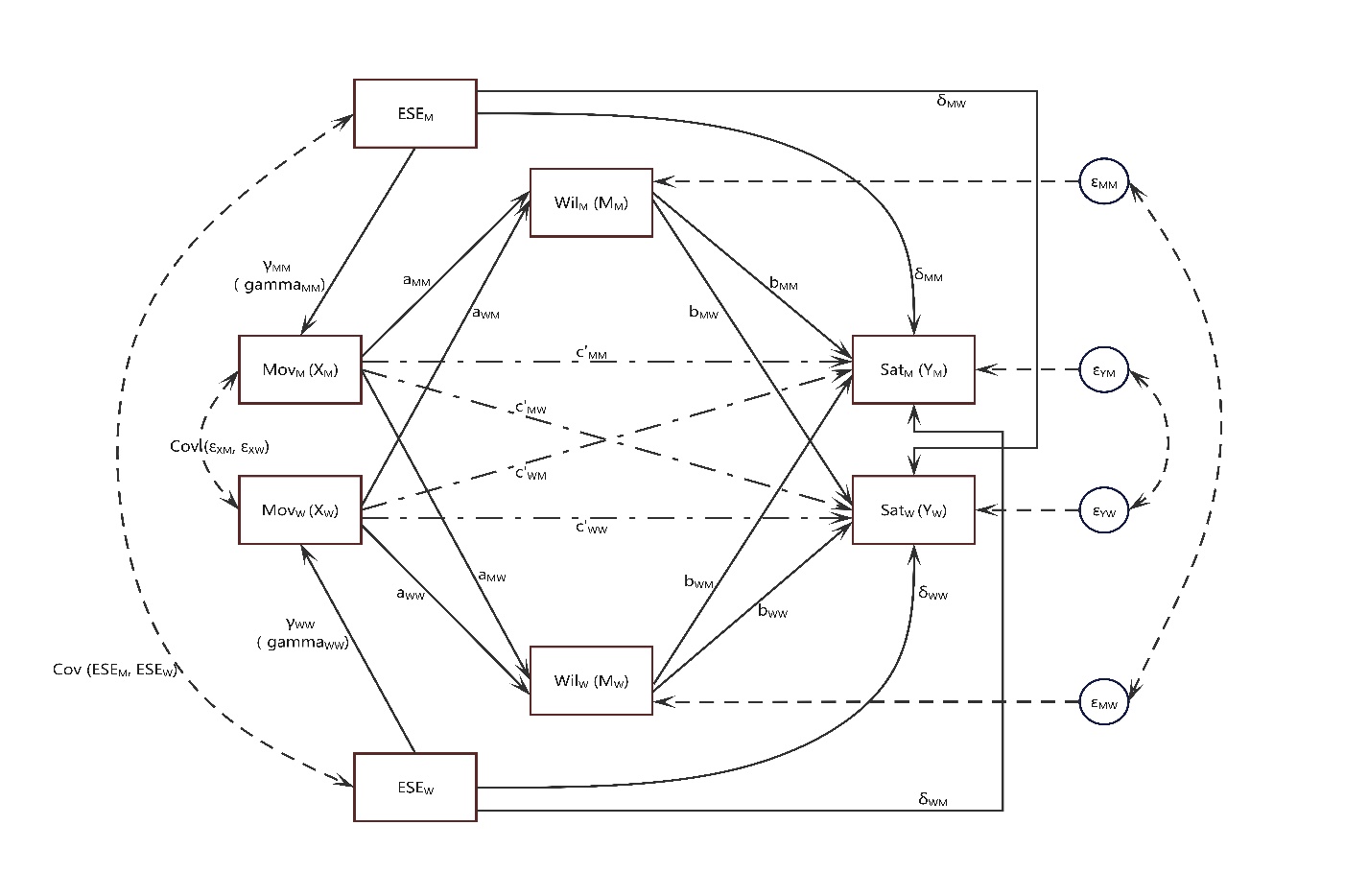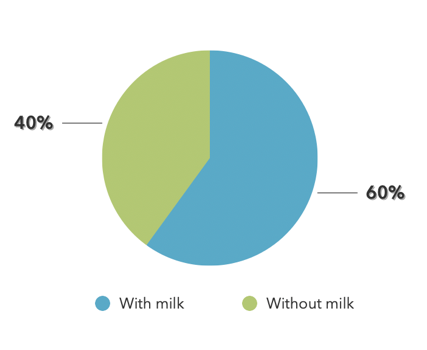

Volume 98
Published on November 2025Volume title: Proceedings of ICIHCS 2025 Symposium: Literature as a Reflection and Catalyst of Socio-cultural Change

Relationship satisfaction influences mental health and quality of life; however, maintaining such satisfaction can be challenging. Among numerous factors, the initial motive for entering a relationship - an underexplored driver of partner-interaction patterns - may shape later satisfaction. In this study, we will investigate the relations between (1) an individual’s autonomous motivation (Self-Determination Theory) for entering a relationship and their partner’s relationship satisfaction, and (2) that motivation and the individual’s own satisfaction, with willingness to satisfy the partner’s needs as a mediator and both partners’ self-esteem controlled, implementing an actor-partner interdependence mediation model (APIMeM) in lavaan, within Chinese collectivist culture. With a sample of N = 300 dyads, we hypothesize that more autonomous entry motives may lead to greater willingness to meet a partner’s needs for both partners, which in turn improves relationship satisfaction for both partners. The anticipated results underscore the significance of autonomous motives in initiating romantic partnerships and suggest practical implications for premarital counselling and relationship-quality improvement.

 View pdf
View pdf


This study examines self-objectification and self-empowerment of female influencers sharing experiences of eating disorders on the digital platform Xiaohongshu. Employing a mixed-methods approach that combines qualitiative analysis with quantitative statistics, it systematically investigates their content production types, eating behavior patterns, and the operation logic of the platform. The findings reveal three primary modes of content production-“experience sharing,” “everyday documentation,” and “public-interest science communication”-most of which are intertwined with commercial elements. Their eating behaviors display a dual pattern of “excessive control-compensatory loss of control,” often accompanied by a high prevalence of both physiological and psychological comorbidities. The study uncovers the binary tension between “objectification and empowerment” in women’s bodily narratives on digital platforms, while also highlighting the alienating influence of commercial logics on eating disorder narratives. These insights offer valuable empirical reference for understanding eating disorder interventions and discourses on women’s bodies in the digital age.

 View pdf
View pdf



This article compares how sundials arose and were shaped in the Greco–Roman world and in early China between the fourth century BCE and the fourth century CE. It uses published historical sources together with archaeological catalogues to group the Mediterranean examples into the usual types—spherical, conical, planar and cylindrical—and to comment on several portable pieces. For the Chinese side, it turns to excavated instruments and transmitted texts to follow their appearance and early find contexts, and to note the main disagreements about how they were used and how they should be classified. Viewed together, both traditions start from measuring a shadow cast by a vertical gnomon, but later forms moved in different directions because the social tasks assigned to timekeeping and the technical choices were not the same. Placing the two bodies of evidence side by side helps to show what was common to early time measurement and what was specific to each cultural setting.

 View pdf
View pdf



The impact of coffee and the placebo effect on individuals ' academic performance is examined in this analysis. It checks the effects of caffeinated, decaffeinated, and no celebrating coffee on word memory and mental state. A brand-new experimental design is used for the study. It changes the order in which participants drink these three kinds of beverages. This enables us to understand both the psychological impact of eating and the simulated activity. The findings show that caffeinated and decaffeinated coffee warmly affect cognitive function and practice. According to this, the placebo effect may include a significant influence on food's opportunities, which are similar to those of caffeine. Additionally, the study demonstrates that coffee drinkers ' opinions and beliefs can have a significant influence on how they perceive its advantages. These reports suggest that caffeine and psychological factors, such as interests and the placebo effect, does contribute to the perceived development in academic performance as a result of coffee consumption. Coming research needs to examine how growing psychological expectations may increase the impact of coffee on academic performance as well as the internal mechanisms that underlie coffee use.

 View pdf
View pdf


The film and television industry, as one of the core categories of the entire cultural industry, is worth paying attention to. However, the investment environment in the film and television industry is complex and ever-changing. Successful investment not only requires in-depth analysis of market trends, but also a comprehensive understanding of the operational models of individual companies. As a world leading film and television production and distribution company, Universal Pictures' performance in the market deserves attention and research. Universal Pictures' profit model is diversified, with its main sources of revenue including box office revenue, video sales, streaming licenses, and merchandise sales. The success of Universal Pictures in film and television investment relies on its accurate control of market dynamics and box office forecasting models, flexible response to international market layout, and effective implementation of risk management. In the future, with the continuous development of the industry, Universal Pictures will need to remain sensitive to emerging markets and technological changes to ensure its competitive advantage in the global film and television industry.

 View pdf
View pdf


Against the backdrop of rapidly developing industrialization and digitalization, the relationship between the meaning of labor and human subjectivity has once again become a focal point of social concern. Using Marx's theory of "labor alienation" as its core analytical framework, this article examines the manifestations and mechanisms of the "alienation---de-alienation---re-alienation" cycle between industrial production and traditional handicrafts, drawing on four case studies: smartphone manufacturing, Jingdezhen porcelain, Suzhou embroidery, and Zhangqiu iron woks. Employing qualitative comparative analysis, the study, through textual analysis and literature review, reveals the tensions between people, labor, and creativity across different forms of labor. The findings suggest that industrialized production, centered on efficiency and the logic of capital, leads to the comprehensive alienation of workers at the levels of product, process, self, and social relations. On the other hand, handicrafts, through control over the entire production process and emotional engagement, achieve a certain degree of restoration of human subjectivity. However, marketization and technological intervention may also trigger new forms of "re-alienation," particularly in the era of artificial intelligence (AI), where algorithmic production poses a potential risk of "creation without human touch." This article points out that in the future we should advocate "using technology to counter alienation" through digital intangible cultural heritage education, virtual exhibitions and cultural innovation.

 View pdf
View pdf


The rapid growth of short video platforms has drawn significant public attention to the dissemination and preservation of Intangible Cultural Heritage (ICH). This study examines the divergence in cultural stances among ICH short video audiences, with a particular focus on “cultural guardians” and “cultural tourist”. By analyzing their preferences in video content, discursive interactions, and underlying value orientations, this paper explores the cultural roots and formative mechanisms of such stance differentiation. Findings reveal that the cultural logic of tourists aligns more closely with mainstream consumerism, whereas guardians adhere to a “minority” stance that emphasizes authenticity and historical continuity. This distinction reflects a micro-level tension between tradition and modernity within the digital cultural environment. Although the two groups exhibit clear differences, they are not entirely oppositional. Their ongoing interaction, communication, and negotiation illustrate the coexistence of multiple cultural stances in the digital public sphere. However, Over- spectacle may disengage ICH skills from their original context, reducing them to mere “performative displays.” Ultimately, the enhancement of cultural belonging and the stimulation of “cultural resonance” depend on users’ sustained participation in ICH communication.

 View pdf
View pdf




